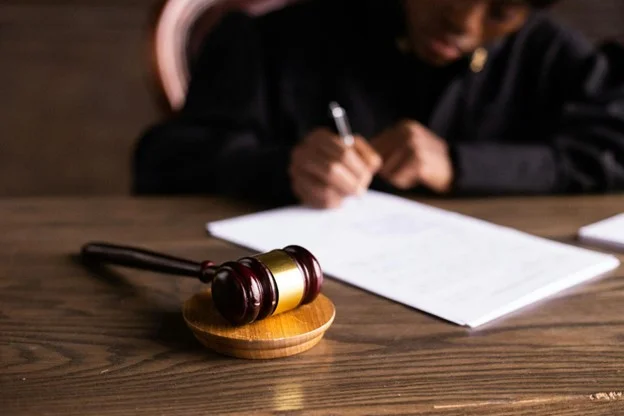When you’re dealing with a personal injury case, one of the most confusing aspects can be figuring out who is responsible for what. In Greenville, South Carolina, where accidents are unfortunately common, understanding the concept of comparative negligence can make all the difference in your case. Whether it’s a car accident on a busy Greenville road or a slip-and-fall in a local store, knowing how fault is assigned can impact the compensation you receive. If you’re unfamiliar with how this works, let’s break it down so it’s easy to understand and actionable.
Contents
What is Comparative Negligence?
Comparative negligence is a legal concept that comes into play when more than one party shares responsibility for an accident. Essentially, it’s a way to determine fault percentages and adjust compensation accordingly. If both parties involved in an accident are partially to blame, this system ensures that accountability is fairly divided.
South Carolina adheres to a modified comparative negligence system. Under this rule, if you are found 51% or more at fault, you won’t be eligible for compensation. However, if you are 50% or less at fault, your compensation will be adjusted proportionally to your percentage of fault.
For instance, imagine you were in a car accident in Greenville. If your damages total $20,000 but you’re determined to be 30% at fault, you’ll receive $14,000 after the reduction. This ensures that each party’s responsibility is factored into the final settlement.
If you’re navigating a case like this, reaching out to legal professionals in Greenville can be invaluable. George Sink, P.A. Injury Lawyers specialize in personal injury cases and can help ensure you’re treated fairly under South Carolina’s comparative negligence laws. To learn more about the practice areas they cover, you can check this link: https://www.sinklaw.com/greenville/
How Comparative Negligence Works in South Carolina
South Carolina’s modified comparative negligence system ensures that fault is shared equitably. But how does it work in practice? Let’s take a closer look at how this law applies to personal injury cases in the state.
If you’re involved in an accident, the first step is to determine fault percentages. Insurance companies, attorneys, and sometimes the courts will analyze evidence such as accident reports, witness statements, and photos. They’ll use this information to decide how much blame each party should bear.
For example, let’s say you’re driving on one of Greenville’s busy streets, and another driver rear-ends your car. At first glance, the other driver seems entirely at fault. However, if the investigation reveals that you braked suddenly without signaling, you might be assigned a portion of the blame—perhaps 20%. If your total damages are $15,000, your compensation will be reduced to $12,000.
This system can be tricky, especially when insurance companies try to shift more blame onto you to reduce their payout. That’s why having strong evidence and a skilled attorney is essential.
What Types of Cases Involve Comparative Negligence?
Comparative negligence applies to many types of personal injury cases, not just car accidents. Here are some common scenarios where this principle is relevant:
- Car Accidents: These cases often involve shared fault, such as speeding, failing to yield, or distracted driving.
- Slip and Fall Accidents: If you trip on a wet floor but aren’t paying attention, you could share some blame.
- Dog Bite Cases: If a dog attacks you, but you provoke the animal, your compensation may be reduced.
- Workplace Injuries: If you ignore safety guidelines or fail to use protective equipment, you might share responsibility.
- Bicycle and Pedestrian Accidents: Failing to obey traffic signals or walking outside designated areas could reduce your claim.
Each case is unique, and determining fault can get complicated. That’s why gathering evidence and working with an experienced lawyer is critical to minimizing your share of the blame.
Challenges in Proving Fault
One of the biggest hurdles in personal injury cases is proving fault. Insurance companies often use comparative negligence laws to their advantage, assigning you as much blame as possible to lower their payouts. This can be overwhelming when you’re already dealing with the physical and emotional toll of an accident.
Here are a few key challenges you might face:
- Lack of Evidence: Without photos, videos, or witness statements, it can be hard to prove your case.
- Disputed Fault: The other party might deny responsibility or provide conflicting accounts of the incident.
- Bias Against Plaintiffs: Insurance companies may unfairly assume you were reckless or negligent.
To address these obstacles effectively, it’s essential to collect comprehensive evidence. Capture photographs of the accident scene, keep a detailed record of your injuries, and secure copies of any police or incident reports. This information can be invaluable for your attorney, who will leverage it to challenge the insurance company’s assertions and advocate for a more equitable determination of fault.
How to Minimize Your Fault in a Personal Injury Case
While you can’t control how others act, there are steps you can take to protect yourself in a personal injury case. Here’s what you can do to minimize your fault and strengthen your claim:
- Follow the Law: Always adhere to traffic rules, safety guidelines, and other regulations to reduce your risk of being found partially at fault.
- Document Everything: Take photos of the accident scene, your injuries, and any property damage. Collect witness statements and keep detailed records of your medical treatments.
- Hire a Skilled Lawyer: An experienced personal injury attorney can present evidence in your favor and challenge unfair fault assignments.
Acting quickly is also important. The sooner you start building your case, the better your chances of gathering strong evidence and securing a favorable outcome.
Understanding how comparative negligence works isn’t just about knowing the law—it’s about protecting your rights and securing a fair outcome. Whether you’re partially at fault or believe you’re entirely innocent, acting quickly and strategically can make all the difference in your case.
By gathering evidence, seeking legal guidance, and staying informed, you can navigate the complexities of South Carolina’s personal injury laws and focus on what truly matters—your recovery.

Sarah Wilson, an accomplished writer and seasoned blogger, weaves compelling narratives that transport readers to new and uncharted worlds. With a talent for vivid storytelling and thoughtful insight, her work leaves a lasting mark, enchanting both the imagination and intellect.
